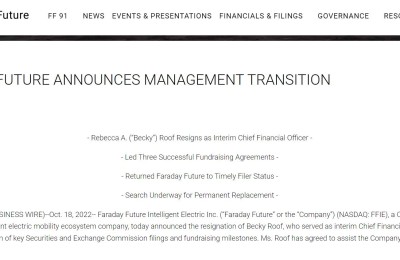Content
These natural defense mechanisms are sadly unhelpful and counterproductive in the modern workplace. In other words, when they were separated from their social structure, their brain cells started dying off. You have probably experienced many of these as your time away from the office stretches out. Remote work is about more than just the advancement of technology, it’s something that has the potential to help improve the way we work, manage, and lead.
Plus, it doesn’t help that you are now supposed to deal with a lot of new virtual tools, communication methods, and remote work policies. Regular human interaction can be easy to take for granted until workers don’t have an office full of people to be around every day. For that reason, loneliness is one of the most common complaints from remote workers. Being isolated from others can impact people’s mental and physical well-being, plus a feeling of “unbelonging” to their organization.
However, when they work remotely, it’s easy to neglect such engagement. When employees don’t spend hours commuting to work and have less office politics to deal with, they tend to be happier – and more productive. According to a survey conducted by FlexJobs, 65% of remote workers said they were more productive when working from home. Barbara Z. Larson is executive professor of management and director of partnerships at Northeastern’s D’Amore-McKim School of Business. Prior to her academic career, Professor Larson worked for 15 years in international finance and operations leadership, most recently as Director of International Finance at R.R. In response to the uncertainties presented by Covid-19, many companies and universities have asked their employees to work remotely.
With the added caregiving challenges as a result of school and childcare closures, changes to nursing home and caregiving regulations, etc., employees are under more duress than typical. What’s critical is that you, as a manager, sign off on the every-now-and-then distraction. Show your team that you’re fine with the occasional jaunt on Twitter or a bit of playtime with the dog.
You need to know how to maintain employee engagement—no matter where they’re located. There are a few primary issues you may want to consider right at the start. Because you will not meet the employee in the corridor and remember to recognize them, be deliberate about mentioning this during team meetings and in your one-to-one meetings with your employees. While it is vital to treat everyone in your remote team equally, you should make the effort to recognize high performance and those who live by your company values. To provide emotional support, you will need to tackle issues from a place of empathy, always be in communication with your employees, and ask them if there is anything they need from you.
Challenges And Best Practices Of Managing Remote Teams
You, as a manager, need to approve of the occasional distractions. Show your coworkers you’re okay with a bit of Twitter surfing or dog-playing time. Fighting these interruptions is pointless because they are healthy and unavoidable. If you use Microsoft Teams internally, create an onboarding team for your new hire, prepare all the required tasks, resources and other information they might need to successfully onboard. Try nBold’s Onboarding template to structure and streamline this process.
For example, what specific tasks or perspective do you expect each team member to contribute? Remote employees are faced with unique challenges and you have to understand those challenges to effectively manage them as part of your team. Many people believe they’d be more productive if they had the freedom to work from home.
Managing Remote Employees: 9 Tips For Success
In a remote environment, the team members you manage may have different emotional challenges than those in a co-located environment. We have already alluded to loneliness, others may struggle to manage their time. You could take a leaf from remote working platforms like Upwork, which has a “virtual water cooler” known as the Coffee Break, where employees can interact and share information and news. To determine outputs, there is a need for clarity regarding what should be accomplished over a given period. To ensure that tasks don’t lag, create milestones that have precise deadlines, and schedule meetings to follow up on progress. In the traditional work setting, as long as someone has clocked in, is sitting at their desk, and leaves at the agreed time, they usually consider themselves to have done a full day’s work.
- However, they show that the manager of remote employees needs to be clear about the challenges they may meet.
- And in some cases, that’s exactly what you should do; if you’re on a tight deadline, fighting a fire, or just having a quick standup meeting, that makes sense.
- FlexJobs’ 6th Annual Work Flex Super Survey found that 76% of employees believe they can get more done remotely due to the frequent distractions in their office.
- And many of your workers need to access that information to do their jobs properly.
- Along with choosing and becoming proficient with the actual platforms, you also need to set precedents for which channels are appropriate for which types of communications.
Ad-hoc commuting and full-time telecommuting are also popular, with 69 percent of organizations offering the first and over 25 percent offering the latter. These get-togethers allow us to emerge in team building all week long. We all talk to people from different teams and get to know each other’s personalities. For example, from watching people’s Pecha Kucha presentations, we discovered that the majority of our team is obsessed with cats, dogs, sports, traveling, psychology and food. The manager doesn’t need to waste their time with daily check-ins, frequent status meetings or crafting direct reports. Employees need to feel plugged-in and included even when they can’t physically participate in person.
Create Remote Team
When the pandemic limited us from seeing each other in real life, we started organizing so-called staycations. During these week-long events, there are Zoom-hosted presentations, workshops, games and welcome drinks — allowing us to continue to grow stronger as a team. If people find an course or conference related to their job , we https://globalcloudteam.com/ happily support them! Allowing people who are motivated to develop themselves will always benefit your business. On Notion, people are also encouraged to write a “How to work with me manual”. These are short profile texts in which team members describe how they enjoy remote working, collaborating and being approached by colleagues.

If you would have interrupted someone in the office, then it’s worth bringing them in, or waiting until they’re available. Want help making the most of your remote one on ones and automate some of the manual work around agenda setting, follow-ups, and prep? These questions and more are available for easy reference in your 1 on 1s when you sign up for a free trial of Lighthouse here. See if your company can help cover the cost of better internet/more bandwidth for your employee, or encourage them to work somewhere they can more reliably take calls.
Leading Virtual & Remote Teams
Be sure to let your own personality emerge in your interactions to build a foundation of trust. Yes, you need to draw a line, but the rewards to really getting to know an employee can be huge. Offer them tips to stay productive and avoid the distractions of working at home. A good way to motivate employees and build a sense of togetherness is to collect and share advice from employees with experience working remotely, for example via a testimonial video or email. In addition to team events, you should also schedule regular one-to-one check-ins with employees. While you can adjust the frequency and length of these to suit the needs of the team and the individual, predictability is key, so follow through with any scheduled check-in.
Kate holds degrees in law and business management, combined with 8+ years’ experience as a human rights lawyer. Plus, as we said earlier, consider using an all-in-one communication app that can make collaboration easy and bring team members together despite the physical distance that comes with remote work. Some of the best ways to do that include virtual hangouts, joint brainstorming sessions, morning coffee standups, online lunch and learns, and team-building games. Go around in a circle and give each worker a chance to talk about their plan for the day, any issues they have, and what they need from other team members.
Best Practices For Effectively Managing Remote Teams
For developers, it could also entail spending a week actually working with the development team. Create and share forms and surveys with your employees in an instant. This includes digital access to policy and procedure manuals, templates, client files, and software including conferencing and scheduling tools. Physical tools, such as a laptop, printer, and corporate credit card may also be necessary. Easily keep your employees connected and informed wherever they are through your own communication app.
As of April 2021, The Remote Company is a team of 130 people from 30+ different countries. Whatever the reason, a weak link can negatively affect the entire team. Pre-pandemic, remote working was often considered a perk, offered by a limited number of employers in limited circumstances.
Here are some tips to help you tackle the challenges of managing remote employees, plus the pros and cons of having a remote workforce. “The transition to remote communication removes the personal context that helps us interact with each other.” The best way to successfully manage remote workers in the new landscape is with a productivity monitoring and workforce analytics solution like ActivTrak. Continue reading to learn some tips and tactics for supervising remote employees.
Part of the challenge was learning to manage their remote workforce. A crucial expectation you’ll need to set for your remote team is which communication channels to use. Hopefully, you already have some remote communication tools in place. The most important thing you can do when you remotely manage a team is to establish shared expectations with everyone involved. These expectations encompass everything from virtual work hours to project scheduling and adjustments to production timeline charts. This may seem like overkill, but for managers and teams new to remote working, this is key.
Taking the time to do this will also make them like working for you more. However, if that’s all you do, you’re really missing out on a critical part of management. This is why as a team here at Lighthouse, any prolonged conversation on Slack we try to turn into a quick phone call. It’s saved us many misunderstandings and quickly helped us move forward aligned and understanding one another. Without any of the non-verbal clues that come from what we see and hear, communication issues can easily arise. Unfortunately, our minds tend to do the opposite due to thousands upon thousands of years of primal programming that causes us to assume something is a threat by default for the sake of survival.
Our support team is our most engaged team because the people in this team feel especially connected. While remote work requires each team member to manage their own projects, that doesn’t mean you shouldn’t create a structure and process that everyone follows. Managing a remote Managing Remote Teams team will be extremely challenging if you don’t have a set of guidelines or values that everyone understands and respects. In order to understand what truly motivates and derails an employee’s productivity you have to know them personally on some level, like it or not.
For ideal remote management of your team, you need to step back and let your employees handle things in the way that works best for them. Holding regular check-ins with your remote team members is essential for maintaining productivity. A distributed team typically uses several communication tools, such as email, video conferencing, and instant messaging, to easily keep in touch. Once you come up with a strategy, the first thing to do is document it and share it with all your remote employees.
“The best method is to ask employees how they want to be managed while working remotely,” Pellman said. “That way, managers can keep a pulse on what each employee needs to be productive while working from home.” No matter which remote work setup you choose, you’ll need to effectively navigate some common managerial challenges in order to succeed. So, it’s important to consider different time zones when you’re managing people from all over the world.






